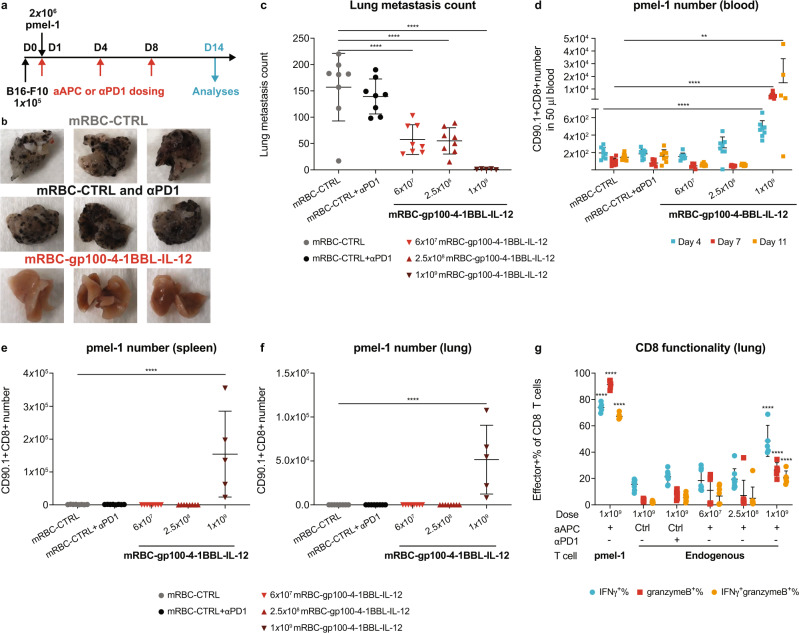Fig. 5. mRBC-aAPCs targeted against a tumor-associated antigen (gp100) promote antigen-specific pmel-1 T-cell expansion and effector function and dramatically reduce lung metastasis of B16-F10 tumors.
a C57BL/6 mice were injected intravenously with 1 × 105 B16-F10 tumor cells on day 0 followed by transfer of 2 × 106 naïve pmel-1 T cells on day 1. Mice (n = 8) were then dosed with 1 × 109 mRBC-CTRL, 1 × 109 mRBC-CTRL with anti-PD-1 (αPD-1), or 1 × 109, 2.5 × 108, or 6 × 107 mRBC-gp100-4-1BBL-IL-12 on days 1, 4, and 8. Analyses were performed on day 14 unless otherwise specified. For 1 × 109 mRBC-gp100-4-1BBL-IL-12, n = 5 for day 14 analyses. b Representative lung photos of 1 × 109 mRBC-CTRL, 1 × 109 mRBC-CTRL + αPD-1, or 1 × 109 mRBC-gp100-4-1BBL-IL-12-dosed mice. c Lung metastasis counts on day 14. One-way ANOVA P < 0.0001 compared to mRBC-CTRL at all dose levels. d–g pmel-1 cell number in 50 μL blood (d), the spleen (e), the left lobe of perfused lung (f), and the effector function of lung-infiltrating pmel-1 and endogenous CD8+ T cells (g). One-way ANOVA compared to mRBC-CTRL; blood (d): 1 × 109 day 4 and day 7 P < 0.0001, day 11 P = 0.002; spleen (e) and lung (f): 1 × 109 P < 0.0001; functionality (g): pmel-1 and endogenous CD8 at 1 × 109 dose P < 0.0001 for IFNγ+%, granzymeB+%, and IFNγ+granzymeB+%. Data are depicted as mean ± s.d. and are representative of two independent experiments. Source data are provided as a Source Data file.

